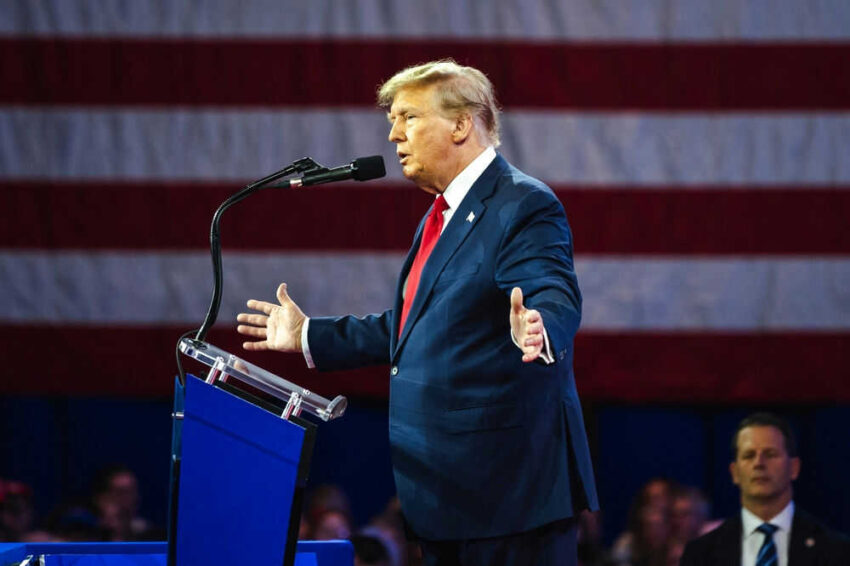(LibertySociety.com) – Can the Trump administration’s unprecedented search for a new Federal Reserve Chair reshape the future of U.S. monetary policy?
Story Overview
- Trump administration considers 11 candidates to replace Fed Chair Jerome Powell.
- Search signals a strategic shift in the central bank’s leadership.
- Expanded list reflects an urgency to align Fed policy with administration goals.
- Potential for significant shifts in monetary policy and Fed independence.
Trump’s Expansive Search for the Next Fed Chair
The Trump administration is casting a wide net, evaluating 11 candidates to succeed Federal Reserve Chair Jerome Powell. This move is perceived as a strategic effort to install a leader more aligned with the administration’s economic philosophy. With Powell’s term expiring in May 2026, the administration’s early and extensive search is a clear indicator of its intention to shift the Fed’s policy direction to better reflect its economic agenda.
The unusually large number of candidates under consideration highlights the administration’s proactive approach. This expansive list includes prominent figures like Scott Bessent, Jim Bullard, and Philip Jefferson. Each candidate brings distinct perspectives and potential policy shifts, reflecting the administration’s desire for a chair who would support its economic and regulatory priorities. The search’s timing and breadth underscore an urgency to shape the Fed’s future policy course.
Historical Tensions and Strategic Motives
Jerome Powell’s tenure has been marked by tensions with President Trump, particularly over interest rate policies. The President’s dissatisfaction with Powell’s reluctance to implement aggressive rate cuts has fueled these tensions. This history fuels the administration’s resolve to find a successor more amenable to its economic vision. The search signifies a potential pivot in monetary policy, with implications for the Fed’s independence and its approach to balancing growth and inflation.
Presidential influence over the Federal Reserve is not unprecedented. Past administrations have used appointments to steer monetary policy, as seen with Ronald Reagan’s appointment of Alan Greenspan. Trump’s efforts to replace Powell reflect this historical interplay between executive preferences and Fed independence, highlighting the central role the Fed chair plays in shaping economic policy.
Power Dynamics and Stakeholder Interests
The decision to appoint a new Fed chair involves multiple stakeholders. The President nominates, but the Senate confirms, creating a dynamic interplay of political, economic, and institutional interests. The Federal Reserve’s leadership wields significant influence over monetary policy, impacting markets, employment, and inflation. The ongoing search has ignited debates over the Fed’s future direction and the balance between political influence and institutional independence.
Trump Admin Considering 11 Candidates for Fed Chair https://t.co/IS6U2vyDGT pic.twitter.com/SLCe3UIlFF
— Lester McClintock (@LesterMcCl28224) August 13, 2025
Financial markets and industry stakeholders closely watch the search process, aware of its potential ramifications. A new chair aligned with Trump’s economic views could lead to looser monetary policy, affecting inflation control and market confidence. The Senate’s role in confirmation adds another layer of complexity, as it weighs these factors against broader economic and political considerations.
Potential Implications for U.S. Monetary Policy
The Trump administration’s search for a new Fed chair carries significant implications for U.S. monetary policy. In the short term, market uncertainty may increase as investors speculate on potential policy shifts. In the long term, the appointment could lead to substantial changes in monetary policy, regulatory approaches, and the Fed’s independence. A chair closely aligned with the administration could prioritize growth and lower interest rates, potentially impacting inflation and economic stability.
The search process also raises broader questions about the appropriate balance between growth and inflation control, amid concerns over the politicization of the Fed. By reshaping its leadership, the administration seeks to align monetary policy with current economic realities, while critics warn against undermining the Fed’s credibility and effectiveness. The unfolding developments will be pivotal in determining the future trajectory of U.S. economic policy.
Copyright 2025, LibertySociety.com .
Click this link for the original source of this article.
Author: Editor
This content is courtesy of, and owned and copyrighted by, https://libertysociety.com and its author. This content is made available by use of the public RSS feed offered by the host site and is used for educational purposes only. If you are the author or represent the host site and would like this content removed now and in the future, please contact USSANews.com using the email address in the Contact page found in the website menu.








